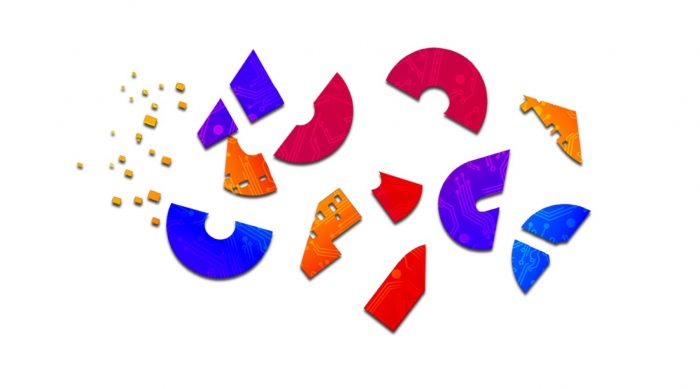August 29, 2018 at 02:34PM
Go to the source

While it still requires some deal jiu-jitsu, Tronc looks to be on the brink of being broken up.
Will Wyatt’s new Donerail Group, several confidential sources tell me, has now gotten the financing in place to do a deal to buy Tronc. Donerail would purchase Tronc’s 10 daily newspaper properties, take the company private, and then most likely sell the papers off to individual buyers — some of whom it already has lined up.
Tronc’s been
in play, quietly, for much of the year
, but several pieces of the deal puzzle have only just fallen into place. (Donerail’s interest was first
by Reuters.) But it’s now become clear, through multiple insider accounts, how such a deal may work. A completed deal would likely come in as a $640 million to $700 million transaction. That would value Tronc shares somewhere above the $18 to $19 range; they trade at $17 today.
On the surface, the latest drama to envelop Tronc looks fairly straightforward. “Alternative investment” fund sees chaos and cash in the unending decline of the daily newspaper business, thinks it can make a buck.
Tronc being Tronc, though, nothing is as straightforward as it seems. Unsurprisingly, the characters that have starred in the company’s two-year dramedy — most prominently moneyman Michael Ferro and now L.A. Times owner Patrick Soon-Shiong — have assumed major roles, even if their parts have gone largely unreported.
If the Donerail deal goes through, it apparently requires Soon-Shiong throwing in with it. That means he would maintain his continuing 25 percent stake in Tronc — which he’s held onto throughout his long effort to buy the Los Angeles Times and San Diego Union-Tribune. Soon-Shiong’s retention of that stake makes Wyatt’s financing of the deal possible; he only needs enough borrowing to pay off the other 75 percent of shareholders.
The apparent quid pro quo: Soon-Shiong would extend to other Tronc, or Tronc-sold, properties, the suite of newspaper technology services he’s trying to rapidly build. (The L.A. Times declined comment on Soon-Shiong’s tech intentions.)
There are a lot of moving, and dependent, pieces there, but insiders say that’s the contour of the deal currently in detailed final discussions.
If it works, Wyatt — an accomplished “event-driven” investor — gets his deal done and aims to make money selling off Tronc, title by title, city by city. Soon-Shiong gets to magnify the impact of his planned news technology strategies, aiming to combine the substantial engineering resources of his Nantworks technologies with those of news publishing — in part potentially replacing The Washington Post’s Arc platform, which has been rolling out across Tronc newspapers.
Still playing out in this deal: the odd relationship between Soon-Shiong and Michael Ferro. For a very short time — banding together to fend off a hostile Gannett bid only two years ago, though it feels like an eon in Tronc time — the two were allies. Since then, it’s been a war between the two: hot, cold, and then lukewarm enough for Soon-Shiong to complete his purchase of the Times from Tronc in June.
But the tale of the two doesn’t stop there.
While #metoo allegations forced Ferro out of his formal chairman role in March, he’s kept a steady hand behind CEO Justin Dearborn’s tiller — among other things figuring out a new way to pocket a $7.5 million payoff from the company, a move just reported in federal filings this month and detailed below.
Formally, Ferro still heads up Merrick Media, the group of Chicago-based investors that opens a quarter of Tronc. His investors, as I have
, want out. So Ferro has been trying for months to swing some kind of deal to get that stake sold, and at an above-market price.
In April, he announced a deal with McCormick Media to cash out Merrick at a hefty premium, intended to net $208.7 million. But that deal fell through, prompting my satiric (and premature) Ferro obit.
In the months since, he’s been working another deal — to sell the whole company.
That’s where Donerail fits in. Its head, Will Wyatt, is no stranger to Ferro. In fact, his then-employer Starboard Value took a position in Tronc as it fended off Gannett in 2016, reports the Chicago Tribune’s Robert Channick. In his days at Starboard, the company became quite familiar with Tribune Publishing, Tribune Media (its then-broadcast sibling) and then Tronc. Wyatt himself played a role as a “consultant” to Tronc on the L.A. Times sale to Soon-Shiong, so he became well in touch with all the players.
That’s what led to the approach of keeping Soon-Shiong in the ownership group — and satisfying his strategic aims. Soon-Shiong could want to just cash out of his holdings, and has assessed the market for his quarter-share, say sources. Alternatively, he can look at his participation in a new ownership group as an opportunity to further his “100-year plan” to transform news media.
The Times’ technology transition, after the closing of the sale, continues to be problematic. Though a Transition Services Agreement — that long held up the closing of the Times sale, as I reported — is in place, the process has been arduous.
And that’s where part of the deal jiu-jitsu resides. Soon-Shiong, who recently hired technology talent back from Tronc, wants to reverse the proposition. He would like the new Times, say sources, to build out and own the kinds of technologies — including artificial intelligence-directed predictive analytics — and then provide them more widely to newspaper companies.
It’s a big vision. One issue: timing. While Soon-Shiong’s vision and financial capacity are clear, little is now built. If the Donerail deal should proceed, with Soon-Shiong’s technology services as part of a package sold to buyers of individual properties, what exactly would be available to them — and when?
Curiously, this deal could get done without clear answers to those questions.
Buying Tronc: Where’s the value?
Tronc doesn’t seem like a big prize.
As public newspaper companies reported their second-quarter results, Tronc managed to turn in the worse revenue performance among all its peers. Tronc lost 11 percent, year-over-year, in Q2. No one did better than a 4.9 percent loss, which GateHouse recorded, but none of other groups dipped into double-digit downturn territory.
The company’s major news of the quarter: slashing the New York Daily News newsroom in half, in an effort to turn the Ferro-bought property from a big ongoing loss to break-even. Tronc maintains its 2018 profit forecast only by ramping up the cutting of expenses, including newsroom staff.
(The only good recent news? Today’s International Trade Commission ruling reversed the new tariffs on Canadian newsprint. Those tariff-related price increases had dinged Tronc earnings by $2.5 million in the second quarter alone. Newsprint pricing should now ease into the final quarter of the year, helping Tronc and newspaper budgets overall.)
At a price of $640 million to $700 million, Wyatt’s new group would pay a relatively high multiple for the company — about 5× its 2018 forecast EBITDA. At that hefty price, close financial observers in the news industry share a common (if not-for-attribution) view: Where’s the value?
Yes, eliminating Tronc’s corporate headquarters staff provides some financial rationale for a split-up, but that seems inadequate to justify the math. Those brokering the business of selling and buying newspapers scratch their heads at Donerail’s reported interest.
Common to an increasing number of buyers these days, Wyatt hasn’t talked publicly about his interest — or about what he intends to do with Tronc’s 10 papers if he lands them. (My efforts to reach him were unsuccessful.) In fact, as he’s acknowledged privately recently: “My background’s not in operating companies.” It’s in buying — and quickly selling.
Hence this emerging conventional wisdom: Donerail would split Tronc up, selling the parts.
In this scenario, the likely strategy would be to find “hometown buyers like Patrick Soon-Shiong.” Translation: Find “civic buyers,” the kinds of wealthy individuals (or small groups of wealthy individuals) who still see value in the local newspaper brand and institution. (I called this small group the
four years ago, as a few of them entered the business, an entry that has produced quite mixed results.) Then win an above-market price for each property, as Tronc did at selling the Times to Soon-Shiong for (effectively) $600 million.
“How many of those people are really out there still?” one newspaper CEO asked me this week. “Are there really people in Baltimore, Hartford, and Chicago ready to buy…I wouldn’t go ahead with any deal to buy Tronc unless I had agreements with buyers in at least some of those cities,” he said.
At least a couple of buyers may be in the wings, and it’s possible such “letters of intent” are out there.
McCormick Media, led by Sargent McCormick, a distant relative of
of Chicago Tribune lore, could re-enter the picture. While its first effort to buy Merrick Media’s shares fizzled, the group has
. Now, sources say, McCormick Media could either become a Donerail partner in a wider Tronc buy, or buy the hometown Chicago Tribune itself out of such a deal. Sargent McCormick declined comment on the company’s next moves.
Donerail would probably want to quickly dispatch the financially problematic New York Daily News. There, says one source, Rupert Murdoch, owner of the rival New York Post is set to pounce, paying $1 for the paper.
Hearst remains a logical buyer for the Hartford Courant, given its Connecticut strength, though in the past has seemed uninterested in buying it.
In Baltimore, various civic names have been bandied about for years as potential buyers. It’s unclear which of them, or which new candidates, might now be interested. All of Tronc’s newspaper businesses have continued to shrink and weaken in the interim.
Then there’s likely GateHouse Media interest in the South Florida Sun-Sentinel, adjacent to two significant properties it owns there, and perhaps Tronc’s Allentown and/or Virginia properties.
That would mean a new combination of insiders and outsiders replacing Tronc.
As newspaper industry people contemplate more “outsiders” entering their once-close fraternity, they’ve gotten lessons in vulture investing (via Alden Global Capital’s strategy). Now they can ponder “event-driven” buying.
As a principal at Starboard Value, and before that at Empyrean Capital and Magnetar Capital, Wyatt has specialized in “event-driven” investment. In plain language, that means seizing on an investment opportunity “after a corporate event, such as a bankruptcy, merger, acquisition, or spinoff,” at which point “the event-driven investor will purchase the stock of the company to be acquired, and sell it after the acquisition, when its price has risen to the acquisition price (or greater).”
Most plainly, Donerail sees opportunity in Tronc’s chaos.
Presumably, then, a Donerail buy would net this value investor a quick buck on a Tronc breakup.
The problem: Selling the individual properties at prices above that initial 5× multiple might prove difficult. Also, the properties generally share a low tax basis, meaning the seller would owe significant tax — one financial analyst estimates it at 20 to 25 percent — on sale proceeds.
Finally, there’s the reality that always comes with the unwinding of individual properties from a mothership chain: “dissynergies.” Anyone buying an individual newspaper has to add in the further cost and time of undoing and redoing fundamental operating functions — raising the effective price of any acquisition.
Those are the woes a splitting newspaper company faces. All chains have greatly centralized every business function they can to achieve cost savings over the past five-plus years. That means any new owner of a newly solo daily must figure out everything from basic publishing systems to finance to HR to national ad sales. Remember it was such dissynergy — resulting in that torturous Transition Services Agreement — that
Soon-Shiong’s buy; it’s also what has complicated such heroic separations as the Berkshire Eagle’s
Digital First Media ownership.
Though a much longer shot, Donerail — or a future owner — could decide to operate Tronc whole. Its balance sheet is an enviable one. Tronc paid down almost all its debt — a rare condition in the newspaper trade — when it sold the southern California properties. After it pays taxes of about $110 million on the transaction, it will still have more than $100 million in cash. So, another scenario: a buyer acquires Tronc, scoops up some of the cash, and ladles new debt on top. Those new debt payments, of course, would only further tighten newsroom and other budgets, but they could satisfy short-term investing objectives.
Financial engineering to the fore
All in all, this episode of Tronc drama looks a lot like the previous ones. It is likely to be financial engineering that drives the future of Tronc’s papers from Baltimore to Fort Lauderdale to Chicago — not any new model of digital product, content, or business model. The readers, the employees, and the large affected communities remain mere spectators.
Of course, Michael Ferro remains the man in the middle, ever brokering. Given his familiarity with would-be buyer Wyatt, one financial observer wondered if this would end up with “Ferro round-tripping” — noting Ferro’s uncanny abilities to make money on both ends of a deal, even as more traditional business people whisper that he loves to skate on thin legal or regulatory ice.
Earlier this month, without fanfare or public notice, Ferro pocketed another $7.5 million in cash from the company. Tronc watchers will recall the
he was granted by the Tronc board late last year, after it decided that paying him for its leased jet had gotten too complicated. That deal provided him $5 million a year, beginning in January 2018, in exchange for “certain management expertise and technical services.” Ferro got the first payment in January this year, just before the #metoo charges caused his exit.
Then, in June (and explained in an Aug. 10 SEC filing), the Tronc board decided to pay him money owed for 2019 and 2020, albeit at a “discount.” Ferro granted Tronc a 25 percent discount and took in an immediate payment of $7.5 million. Further, “the Company agreed to pay $0.3 million in legal fees incurred by Mr. Ferro while conducting the Company’s business.”
Even his most severe detractors marvel at Ferro’s continuing ability to come out on top in his business adventures, noting his mastery of timing. (In May, IBM announced layoffs at its new Watson Health division, built in part on the Merge Healthcare business it bought from Ferro and associates in 2015.)
Then there are the financial incentives built into the contracts of top Tronc executives. Those agreements accelerate their bonus and stock option compensation in case of a sale, assuming a legal “change of control” takes place. They amount to as much as $23.5 million in payments. More than $10 million of that, potentially, could go to Ross Levinsohn. Just last week, Levinsohn was able to exercise his first year of Tronc stock options even as the talk around L.A. is how little work Levinsohn seems to be doing now in his reconfigured job as head of Tribune Interactive, where he landed after Tronc removed him as Times publisher and then internally cleared him of his own #metoo allegations.
In short, much of what we know about Tronc’s structuring of compensation favors financial engineering over the betterment of the business — or journalism, or service to its communities — itself.
A Tronc by any other name
How long will that name — Tronc — remain among us? If you’ll recall, many assumed the Tronc name would depart for Trivial Pursuit boards of the future; Tribune Media, its once-sister broadcast company, was finalizing its sale to Sinclair Media, which could have freed up the Tribune moniker. But, unexpectedly, that sale has blown up, and at least for now, Tribune Media remains an operating company. So, even if Tronc isn’t sold and broken up, the chances of it reclaiming its birthright brand anytime soon have shrunk.
Old newspaper brands stir a lot of emotion — and grabbing. Insiders point to quite colorful skirmishes between executives as the Tribune Company split in two back in 2014, with TV stations going to Tribune Media and newspapers to Tribune Publishing. “We found people moving around expensive chairs with hours to go on the split. You know the rule: Possession is nine-tenths of the law,” one former exec remembered this week. In that fray, high-branded art — including Diebenkorns, Rockwells, and Picassos — saw action. Consider the L.A. Times’ Daniel Miller’s own colorful account of the disappearance/reappearance of five iconic Picassos — another layer of tarnish on what was once a great publishing name.
Then there’s the curious Donerail name. Given the gallows humor inherent in the post-Sam Zell travails of the once-staid Tribune Company, it might tempting to think of the stealthy company — a mere single page to its website — as the Donner Company, ready to commit more cannibalism in the eat-or-be-eaten newspaper trade.
Yet Donerail ironically sees itself as an underdog. Donerail, horse-racing historians will tell you, was the biggest underdog to ever win the Kentucky Derby, way back in 1913. It was a 91-1 shot.
You can conjecture among yourselves what that might mean for Donerail’s own odds as it considers entering the daily newspaper business.

